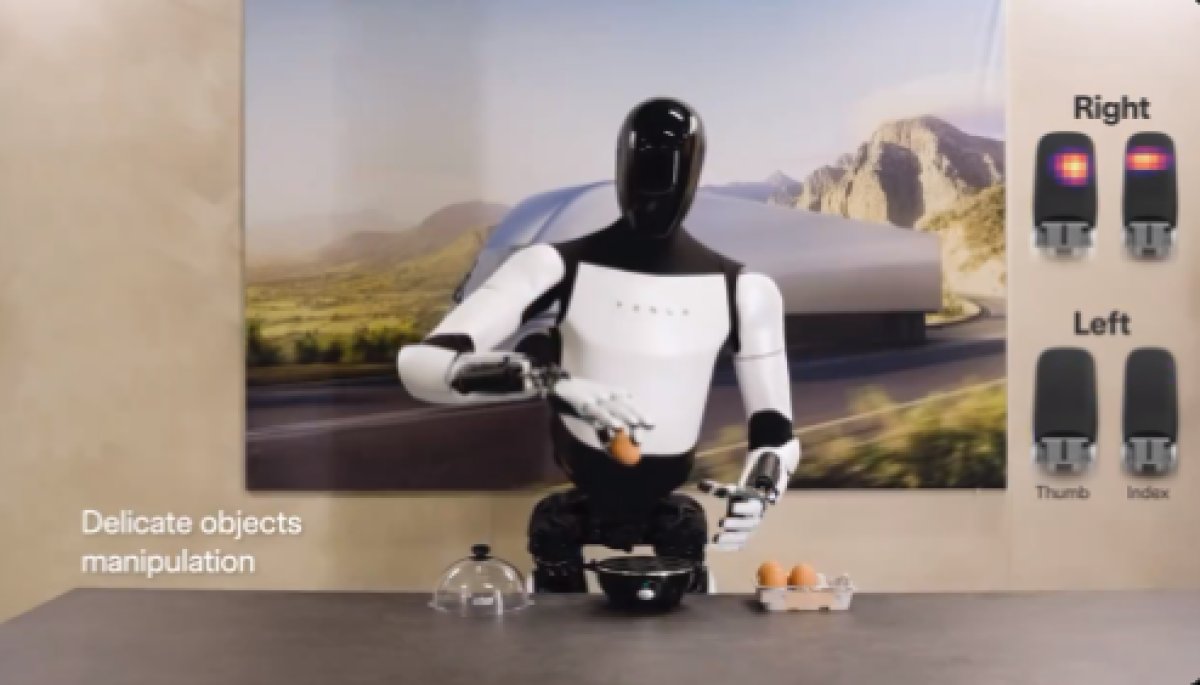Tesla's Robot Revolution: Optimus and The Future of Humanoid Helpers


The Groundbreaking Unveil
Optimus, Tesla’s highly anticipated humanoid robot, was in the spotlight at the 2024 Tesla Shareholder meeting. Crafted meticulously in-house, Optimus’ design revolves around human physiology, aiming to replace humans in both repetitive and high-risk tasks.
From its inception in August 2021, Optimus has evolved through several significant design updates, with more on the horizon. The robot's design even mimics the complexity of the human hand, coming close to the human hand's 27 degrees of freedom with its own 22 degrees.
Inside the Robot’s Brain
At the core of Optimus lies FSD (Full Self-Driving) hardware and software akin to that found in Tesla vehicles, empowering this robot with advanced autonomous capabilities. It can learn tasks by observing human actions or through instruction from a remote operator.
Elon Musk shared that Optimus could be trained to play the piano, a task complicated enough that it showcases the robot’s precision and learning abilities. This learning flexibility raises exciting possibilities for household tasks and industrial applications.
Practical Applications and Future Plans
The main goal for Optimus is to undertake tasks that put human lives at risk or that are deemed monotonous and repetitive. This could range from caregiving to high-precision factory tasks. In fact, Tesla has already deployed two prototype Optimus robots in a factory setting to work on battery cell assembly lines.
Musk envisions a future where there are two humanoid robots for every human on Earth. Tesla aims for an audacious production rate of up to 1 billion Optimus units annually, potentially generating an estimated profit of $1 trillion per year. Optimus could transform various sectors, boosting efficiency and safety.
When Will Optimus Be in Your Home?
While large-scale production is not imminent, Tesla plans to deploy 1000-2000 units to internal factory operations by the end of next year. This phased introduction is designed to refine Optimus' capabilities, facilitate learning, and streamline future mass production.
Musk projected a consumer price of $20,000 per Optimus once mass production scales, making these advanced robots more affordable over time. However, early adopters can expect higher prices until economies of scale reduce costs.
Challenges Ahead
Scaling production is one of Tesla's primary challenges. Currently, each Optimus unit is hand-built, but transitioning to a full-scale production line will necessitate building a dedicated factory. Optimus also relies on Tesla's 4680 battery cells, requiring increased production of these cells to meet future robot demands.
In summary, the future with Optimus promises a world where high-risk and mundane tasks could be a thing of the past, replaced by capable and adaptable humanoid robots. As Tesla continues to innovate, the implications for industry and everyday life are monumental.
Conclusion: A Bright Robotic Future
Envision a future where an Optimus robot arrives at your door to assist with household duties, offering a glimpse into a world of enhanced convenience and safety. Stay tuned as Tesla continues to push the boundaries of robotics and artificial intelligence.
Subscribe
Stay ahead with our newsletter, bringing you the latest in Tesla news, future innovations, and software updates.